Accepted Scientific Name: Raphionacme velutina Schltr.
Bot. Jahrb. Syst. xx. Beibl. n. 51 (1895) 12.
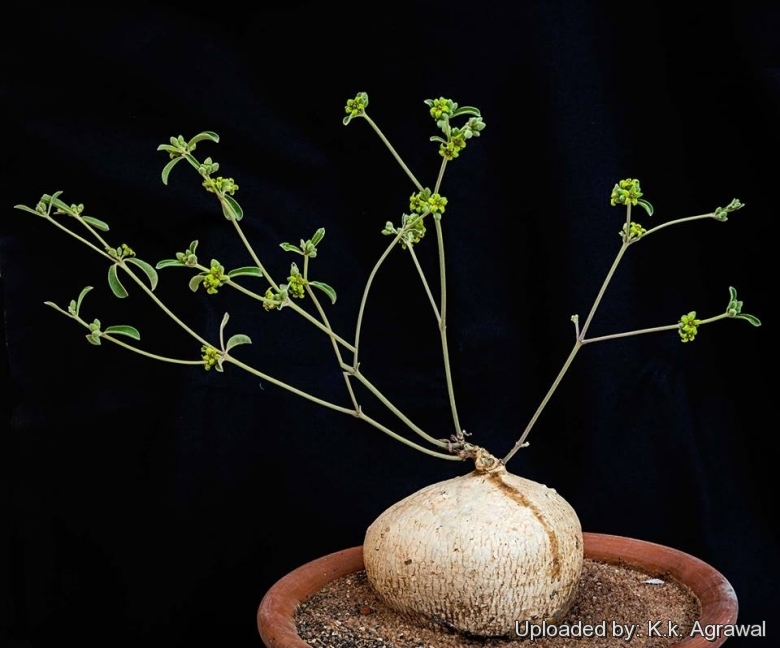
Raphionacme burkei Photo by: K.k. Agrawal
Origin and Habitat: Southern Africa
Synonyms:
See all synonyms of Raphionacme velutina
back
Accepted name in llifle Database:Raphionacme velutina Schltr.Bot. Jahrb. Syst. xx. Beibl. n. 51 (1895) 12.Synonymy: 4
back
Common Names include:
BUSHMAN: Biesse (Biessa, Biessella), Bi
Description: Raphionacme burkeiSN|4233]]SN|4233]] is a small growing caudiciform, perennial herb producing trailing, vining shoots.
Caudex (Tuber): Big mostly spherical ± flattened, almost always unbranched, smooth, above-ground. It might grow to 30 centimetres or more.
Stems: The stems (vines) are numerous, deciduous, semi-erect, shrubby or partially climbing up to 45 centimetres (usually less), scarcely pubescent.
Leaves: In well-spaced pairs; petiole 2-3 mm long, blades linear-lanceolate to obovate, widest about middle, tapering equally to both ends, pointed, up to 5 cm long X 1-1,5 cm wide, usually smaller. Acute, basally tappering, margins ciliate, lower lamina face pubescent.
Flowers: Inflorescences lateral, almost from each node, sometimes also between upper leaf-axils, on short stout stalk, densely many-flowered, ± globular. The flowers are deciduous, pale green star-shaped with a purple centre, Ø 9 mm. Peduncle 1-2 mm long. Corolla lobes reflexed, narrowly triangular, about 5 mm long, densely hairy below, hairless above.
Blooming season: Summer.
Fruit: Solitary, thickly fusiform, glabrous.fruit-halves slender, up to 15 cm long x 5 mm diam, tapering to long point, often only one half developing. This species is closely related and form a complex to Raphionacme galpinii, Raphionacme velutinaSN|4232]]SN|4232]] and Raphionacme zeyheri. The contrastingly bicoloured corona is significant for Raphionacme burkeiSN|4233]]SN|4233]].
Subspecies, varieties, forms and cultivars of plants belonging to the Raphionacme velutina group
 Raphionacme burkei N.E.Br.: Recognizable for the contrastingly bicoloured corona.
Raphionacme burkei N.E.Br.: Recognizable for the contrastingly bicoloured corona.- Raphionacme dinteri Schltr. ex Schinz
 Raphionacme velutina Schltr.: It has a turnip-shaped caudex that might grow to 30 centimetres or more, the vines to one or two meters. Flowers are greenish. Distribution: Angola, Botswana, Namibia, Zambia, Zimbabwe and South Africa.
Raphionacme velutina Schltr.: It has a turnip-shaped caudex that might grow to 30 centimetres or more, the vines to one or two meters. Flowers are greenish. Distribution: Angola, Botswana, Namibia, Zambia, Zimbabwe and South Africa.
Bibliography: Major references and further lectures
1) Urs Eggli "Illustrated Handbook of Succulent Plants: Dicotyledons" Springer Science & Business Media, 2002
2) Werner Rauh "The Wonderful World of Succulents: Cultivation and Description of Selected Succulent Plants Other Than Cacti" Smithsonian Institution Press, 1984
3)James Cullen, Sabina G. Knees, H. Suzanne Cubey "The European Garden Flora Flowering Plants: A Manual for the Identification of Plants Cultivated in Europe, Both Out-of-Doors and Under Glass" Cambridge University Press, 11/Aug/2011
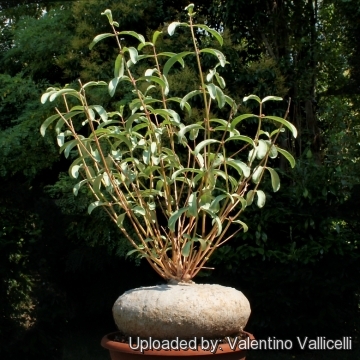 Raphionacme burkei Photo by: Valentino Vallicelli
Raphionacme burkei Photo by: Valentino Vallicelli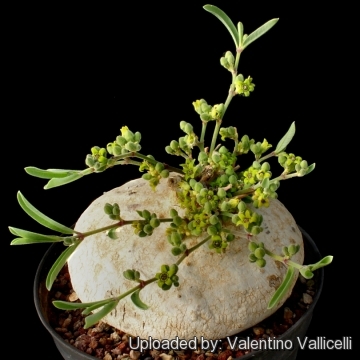 Raphionacme burkei Photo by: Valentino Vallicelli
Raphionacme burkei Photo by: Valentino Vallicelli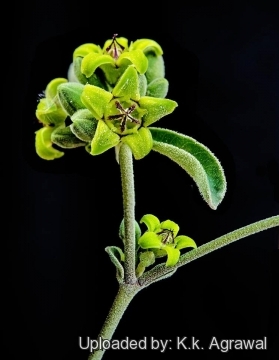 Raphionacme burkei Photo by: K.k. Agrawal
Raphionacme burkei Photo by: K.k. Agrawal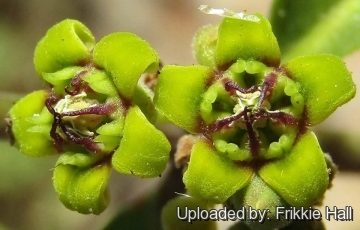 Raphionacme burkei Photo by: Frikkie Hall
Raphionacme burkei Photo by: Frikkie Hall Raphionacme burkei Photo by: Cactus Art
Raphionacme burkei Photo by: Cactus Art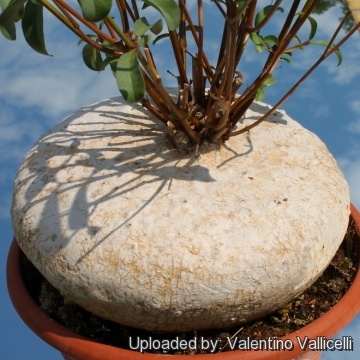 Raphionacme burkei Photo by: Valentino Vallicelli
Raphionacme burkei Photo by: Valentino Vallicelli Raphionacme burkei Photo by: Valentino Vallicelli
Raphionacme burkei Photo by: Valentino Vallicelli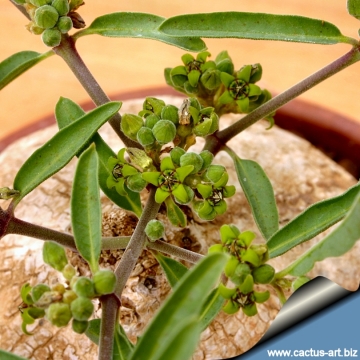 Raphionacme burkei Photo by: Cactus Art
Raphionacme burkei Photo by: Cactus ArtCultivation and Propagation: Raphionacme burkeiSN|4233]]SN|4233]] is a caudiciform plant that grows well in container.
Soil: Give the plant a well drained, airy but rich growing medium which consists of non organic material such us clay, pumice, lava grit, and peat or leaf-mould.
Irrigation: It is probably a summer grower species and need a good deal of water during active growth from spring when the new leaves can be seen forming from the woody neck of the tuber and should be watered only when not dormant. In autumn the leaves begin to go yellow and drop off, so now it rests quite dry in to winter. No water should ever be allowed to stand around the roots. An error in cultivation may produce unsightly holes in the tuber.
Exposure: In cultivation the plants are usually grown in semi shade, with the tubers wholly or (preferably) partially exposed to prevent scorching and rotting of the roots.
Hardiness: It should be overwintered in the greenhouse at temperatures over 12°C (avoid letting temperatures drop lower than 5° C, but some authors suggest that it can withstand light frost at least for short periods if very dry, in these situations it will better resist if sheltered by the winter rains, seen that the humidity and low temperatures render it more sensitive to rottenness. Plants in containers however, suffered major leaf loss.
Maintenance: The dried annual stems need to be removed to keep a tidy appearance. Like quite small pots, repot in very later winter, early spring.
Traditional uses: Raphionacme burkeiSN|4233]]SN|4233]], is known to the bushmen as 'Bi'. It is a useful plant that is particularly important as a source of water in the dry months. It flourishes all year round, and is a major source of water where a water source is not available. It's tuber is juicy, fibrous and bitter.
Reproduction: Can be reproduced both by cuttings and seeds.
Your Photos
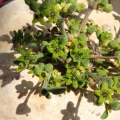
by Valentino Vallicelli
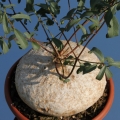
by Valentino Vallicelli
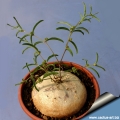
by Cactus Art






















